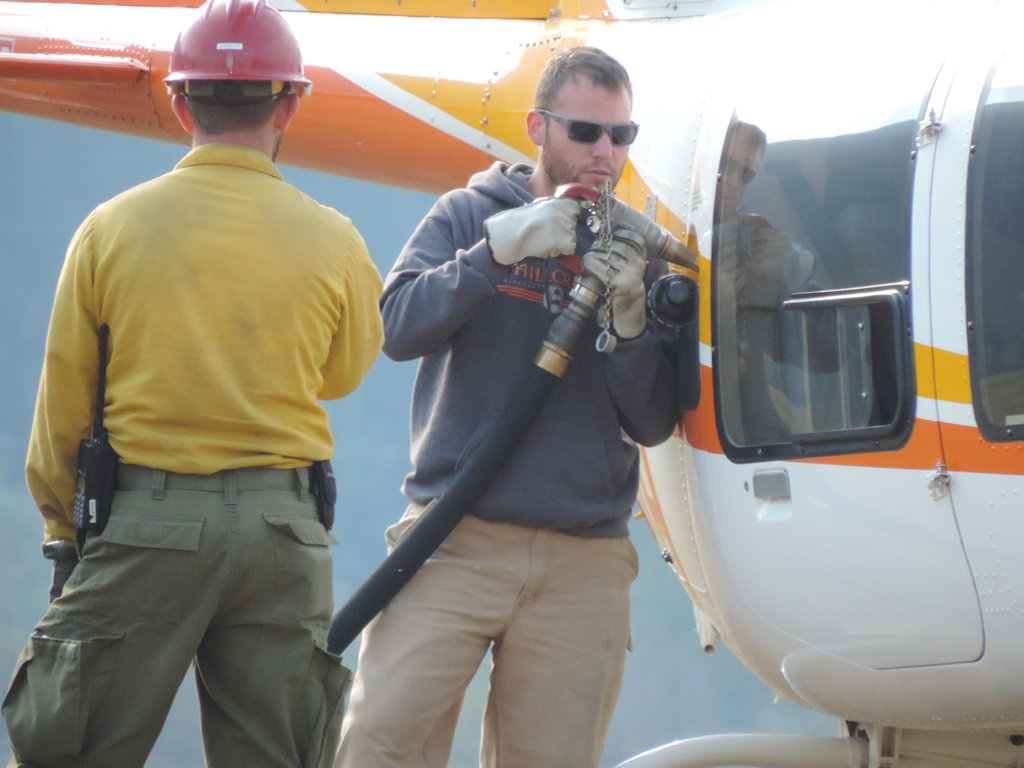
Here are the highlights of the Thompson Fire evening update. No surprises, but some progress on the ground . . .
Fire Update: The Thompson Fire was reported at approximately 1:30 p.m. Sunday, Aug. 9. It is located in a remote south-central backcountry area of Glacier National Park about 15 miles east of the West Glacier entrance and 12 miles southwest of the Saint Mary entrance. The fire is burning in the Thompson Creek and Nyack Creek drainages west of Medicine Grizzly Peak where the Flathead and Glacier Counties border follows the Continental Divide. No structures have been lost or damaged to date and no injuries have been reported.
Crews worked in the Nyack Creek area today. A helitack crew worked on cooling any remaining hot spots around Upper Nyack Backcountry Patrol Cabin to provide additional structure protection. Other crews began constructing a wet line along avalanche chutes on the west side of the fire’s perimeter to contain the fire. This includes the use of helicopter water drops and pumps and hose lays on the ground. Fire personnel in the Two Medicine and Cut Bank drainages continued their structure assessment for possible protection if the fire were to cross the Continental Divide. They are also monitoring for any fire that might cross the Divide.
Although buffeted by winds on Friday, the fire remains west of the Divide and has not made any advance to the east. Without spread east of the Divide, the fire poses no threat to communities around East Glacier and St. Mary. Limited growth of the fire was seen on Saturday on the west side in Nyack Creek.
Weather will remain unsettled through Monday night with the passage of a weak disturbance. This provides an opportunity for afternoon thunderstorms and a slight chance of rain, especially along the Divide. A high pressure ridge will begin building on Tuesday through Thursday bringing warmer and drier conditions. This will bring increased fire spread on the ground with isolated tree torching. As fuels in the burn area dry, there will likely be an increase in smoke production that may be seen from local communities on both sides of the Divide.